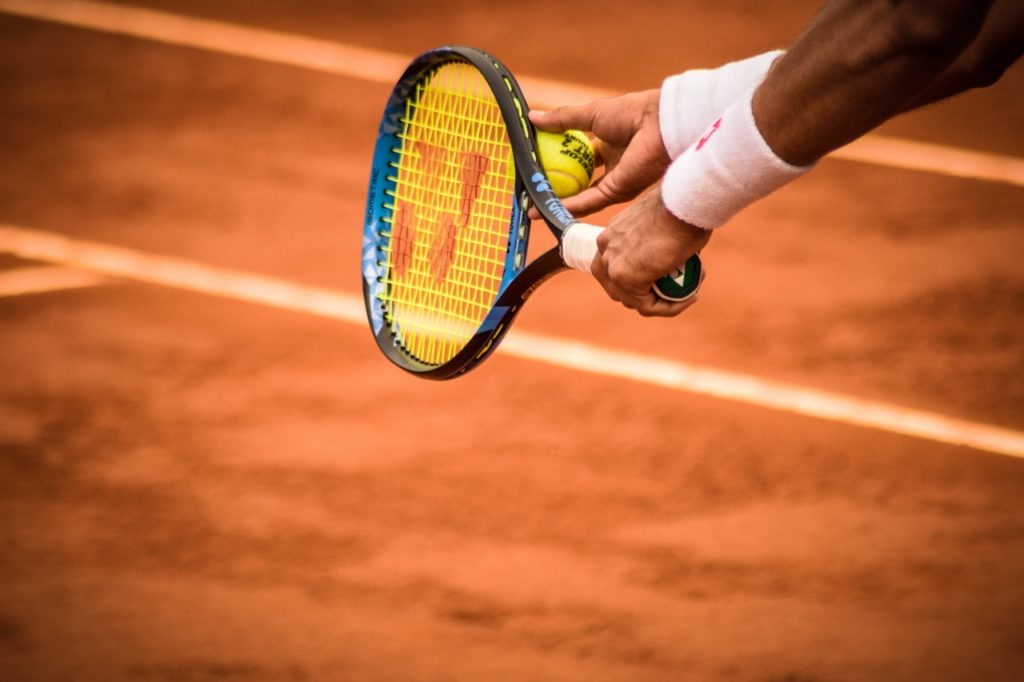The popularity of tennis as both a participant and spectator sport is undeniable. It is widely regarded as one of the most popular individual sports in the world. Tennis can usually be enjoyed by players of any skill level. There are already millions of recreational players who take part in the sport.
At the professional level, tennis can be quite demanding for an athlete in all aspects. The most prominent players at the top of the competition train tirelessly, especially since tournaments often offer millions of dollars in prize money annually.
The physical prowess and mental fortitude needed for this sport is no small matter. It takes more than just hitting a ball towards the other side of the court. You have to consider how to exploit an angle, the technicality of your strokes, and the like. The most significant and most obvious factor of all, however, is the court.
Types of Tennis Courts
Although tennis can be played anywhere, there are four general types of surfaces for tennis courts. Each of these variations come with their own benefits and disadvantages, depending on your playing style. Whether you’re an amateur or an aspiring professional, knowing which type of surface best suits your style of play can make your games all the more enjoyable.
Hard Courts
Hard tennis courts are the most common and widely available type of courts. These are usually found in parks, country clubs, recreation centers, and even schools. Hard courts are considered an all-around kind of court, which is excellent for all types of players.
These courts are made from varying mixtures of asphalt and concrete. A concrete coatings supplier that handles these courts’ construction typically finishes it off with an acrylic surface layer. This added coating helps to seal the surface and contribute some level of cushioning.
Tennis balls can move faster and bounce higher because of the low energy absorption in their composition. Out of the four Grand Slam Tournaments, only the US Open and Australian Open use hard court surfaces.
Clay Courts
Clay courts can be broken down into two forms. There’s the red clay court, which is often made from a mixture of crushed brick. The green clay court, on the other hand, is composed of crushed metabasalt rock.
These types of courts are much cheaper to construct but cost more when it comes to maintenance. For the flatness to be preserved, clay courts have to be rolled. Although these courts’ materials dry quicker than standard clay, the water content must still be balanced.
The textured surfaces of clay courts significantly reduce the ball’s speed. This particular court heavily favors defensive, baseline players as opposed to serve-based players. These are also easier on the body since it provides more shock absorption for players. The French Open is the only Grand Slam that uses clay courts.
Grass Courts
Lawn courts used to be the most common type of courts. This is where modern tennis was born, after all. Due to its high construction and maintenance cost, however, grass courts have been overtaken by hard courts and clay courts.
These courts are composed of short-cut grass on hard-packed soil. Grass courts usually have to be mowed and watered frequently to keep their surface optimal for playing. These variables are also essential to consider, especially for professionals when a match is to be played.
Players who rely heavily on their big serves will perform much better on these courts. It offers a fast surface making it more difficult for receivers to return the serve. The low ball bounces from grass courts also help keep rallies short, so points are quickly obtained. Wimbledon is the only Grand Slam left that features lawn courts.

Synthetic Courts
Synthetic turf courts offer the same feel and benefits that grass courts provide without the added maintenance cost. These courts usually consist of plastic grass fibers making them more durable than standard, cut grass. The top layer of synthetic courts is also filled with sand to help protect them from changing the weather conditions.
Sudden Rise in Players
Despite the unexpected arrival of a global pandemic, tennis experienced a surge in 2020. More tennis rackets were sold and shipped during the third quarter of 2020 compared to 2019. The sales of entry-level rackets went up by approximately 40.9%. This only suggests that a lot more people started playing the sport.
The U.S. Open was also the only Grand Slam event to take place in 2020. Out of the 13,000 COVID-19 tests done on players and staff, a majority came back negative. The only positive tests that came out were before the event took place.
Among countless reasons, it’s not surprising to see why an increase in interest was observed. Tennis can give people an avenue to stay physically and socially active while practicing proper health protocols. Besides being a non-contact sport, the wide tennis courts help in limiting close interactions between players.

